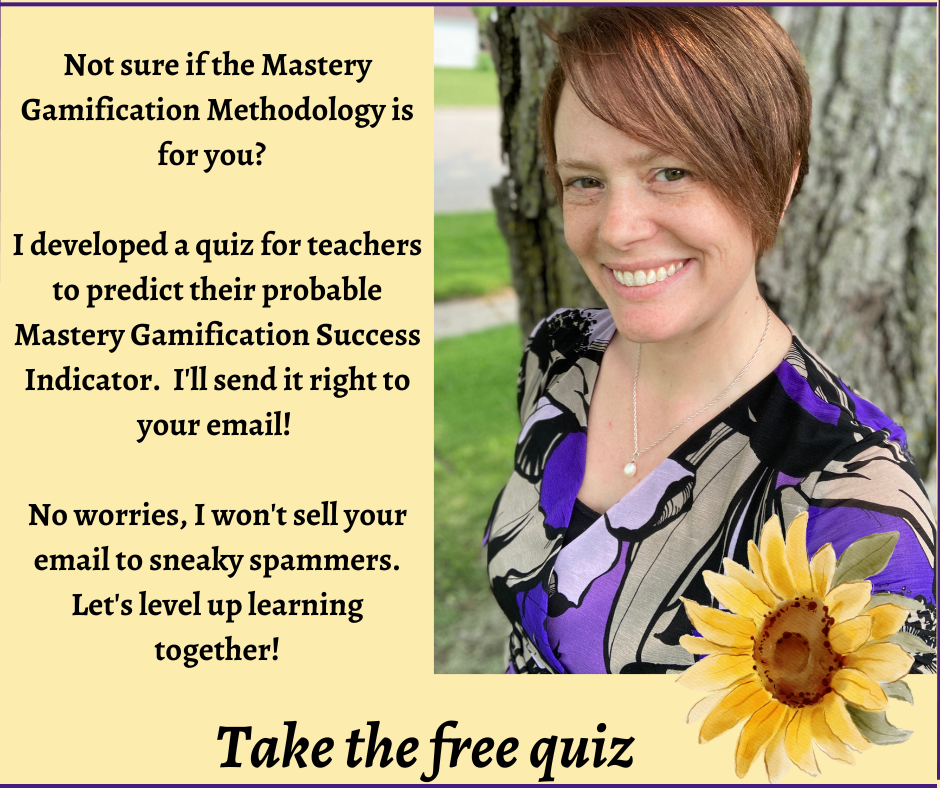Student Roles in the Classroom
The hero. The victim. The spectator. These are the primary student roles in the classroom. If you’re here looking for a blog on classroom jobs for students, move along, this isn’t that post. However, if you are looking for a way to use students’ natural tendencies to tell themselves a story about their lives to engage them in learning, this is the post for you.
Last week’s blog explored the roles of the teacher in the classroom and how the teacher’s mindset affects student learning. This week I’m heading back to school for the new school year and we’re looking to see the best role and mindset for the students to have the most engaging learning environment. The role that teachers play helps to determine the role that the students play. As teachers, we need to foster the best mindset role for students
Stories = Life
One of the Mastery Gamification Methodology’s three pillars is gamification. When most teachers talk about gamification, they just mean that they give badges to kids for accomplishing something. While that is part of my version of gamification, the Mastery Gamification Methodology goes much further. We take the whole game, narrative included, and transform the classroom into an interactive story. Just like in life, every story has a protagonist. By default, you are the protagonist of your own life story and we view everything in life as a protagonist in a story would view it. In order to engage students in learning, that has to be our starting point in the classroom, the student is the protagonist of the story. However, there are many forms a protagonist can take.
The Hero

This is the best role for a student to adopt in order to optimize learning. A hero has a journey, a destination, and a plan to get to his destination. He plans ahead, solves problems, and asks for help when needed. Every video game has a hero who faces problems and the player eagerly solves the problems in order to be the valiant hero. Let’s bring that mindset into the classroom! The defining characteristic of a hero is that he is in charge of the decisions on his journey. He would be wise to accept help but ultimately, the decisions are up to him.
The Victim
We’ve all had a student victim in our classrooms. A victim protagonist allows life to happen to him instead of making intentional decisions. The victim is reactive instead of proactive. A victim likely doesn’t have a destination in mind and they certainly don’t have a plan to get there. Victims don’t take responsibility for their decisions and always find a way to blame someone else for their problems. The victim will use a million excuses to avoid responsibility and, since they don’t take responsibility, they don’t shape their lives intentionally. Many children are born with this as the default setting and they must be taught how to think in a hero mindset.

The Spectator

The spectator protagonist is inspired by “spectator mode” in many video games. A player can choose to use this mode after their avatar has died but the battle is still happening. They can choose spectator mode to fly around the scene but they are unable to interact with their surroundings. You have likely had a student spectator in your class at some point. A spectator student will simply sit and wait out the time until the bell rings. They do not interact with the content. Nor do they make any decisions – good or bad. If they receive a consequence it doesn’t seem to phase them. Many people think that this state is called “learned helplessness” and that it is brought on by putting forth effort in the past and still experiencing negative side effects. The idea is that the student has simply given up and will not try. These students also need to learn how to use a hero mindset.
What’s the Best Way to Teach Student Roles in the Classroom?
The defining trait of a hero’s mindset is that the hero makes decisions about his journey. The hero owns his own agency and uses this ability to bring about the best possible outcome for the hero. One of the best ways teachers can foster a hero mindset is to allow students control in their own education. But that’s a post for another day.
If you like what you’re reading and you haven’t joined my Facebook group yet, now’s a great time to do so! Also, if you like the ideas of the Mastery Gamification Methodology, tell a teacher friend and send him/her to this blog. Let’s level-up education together!
